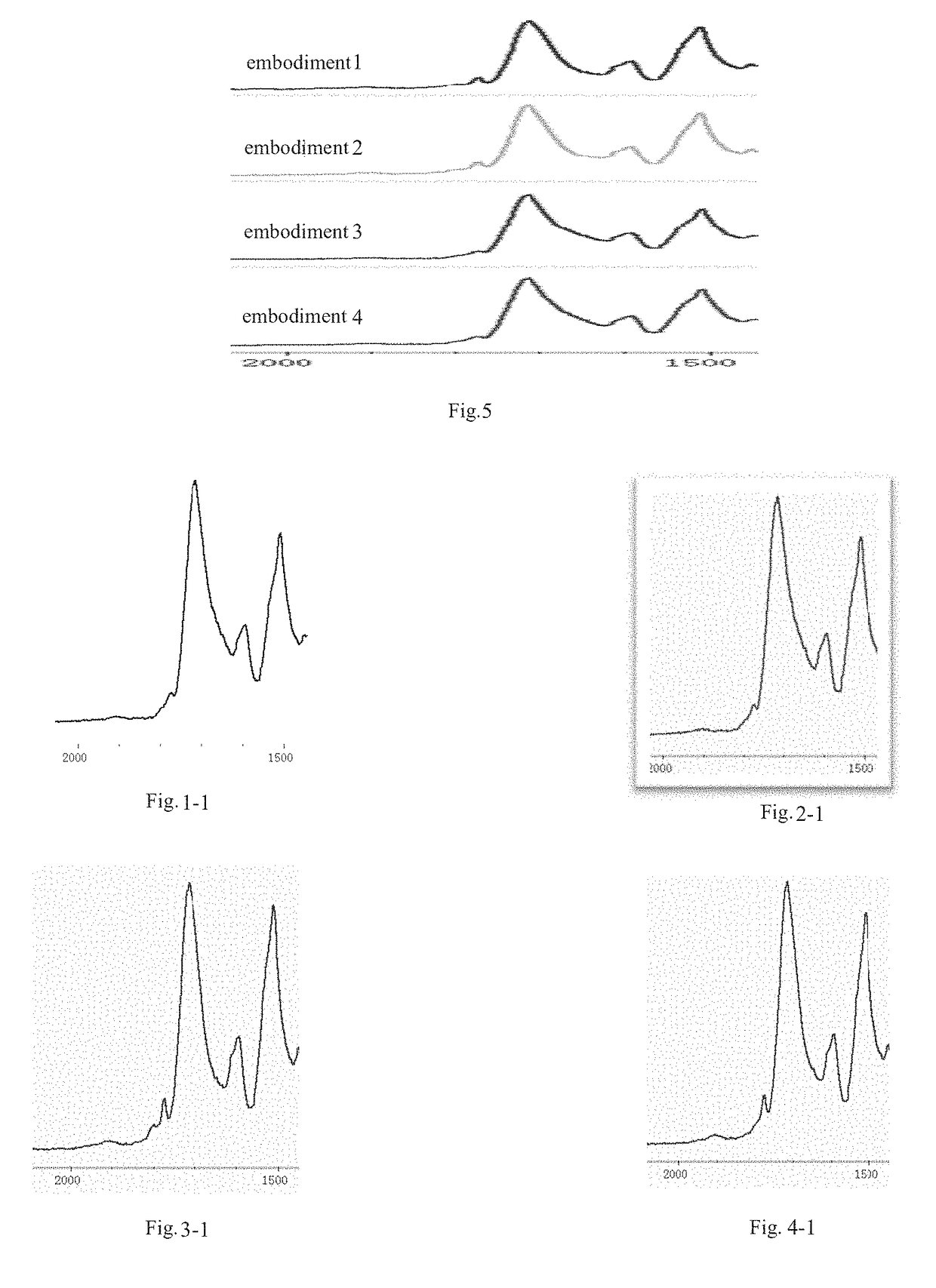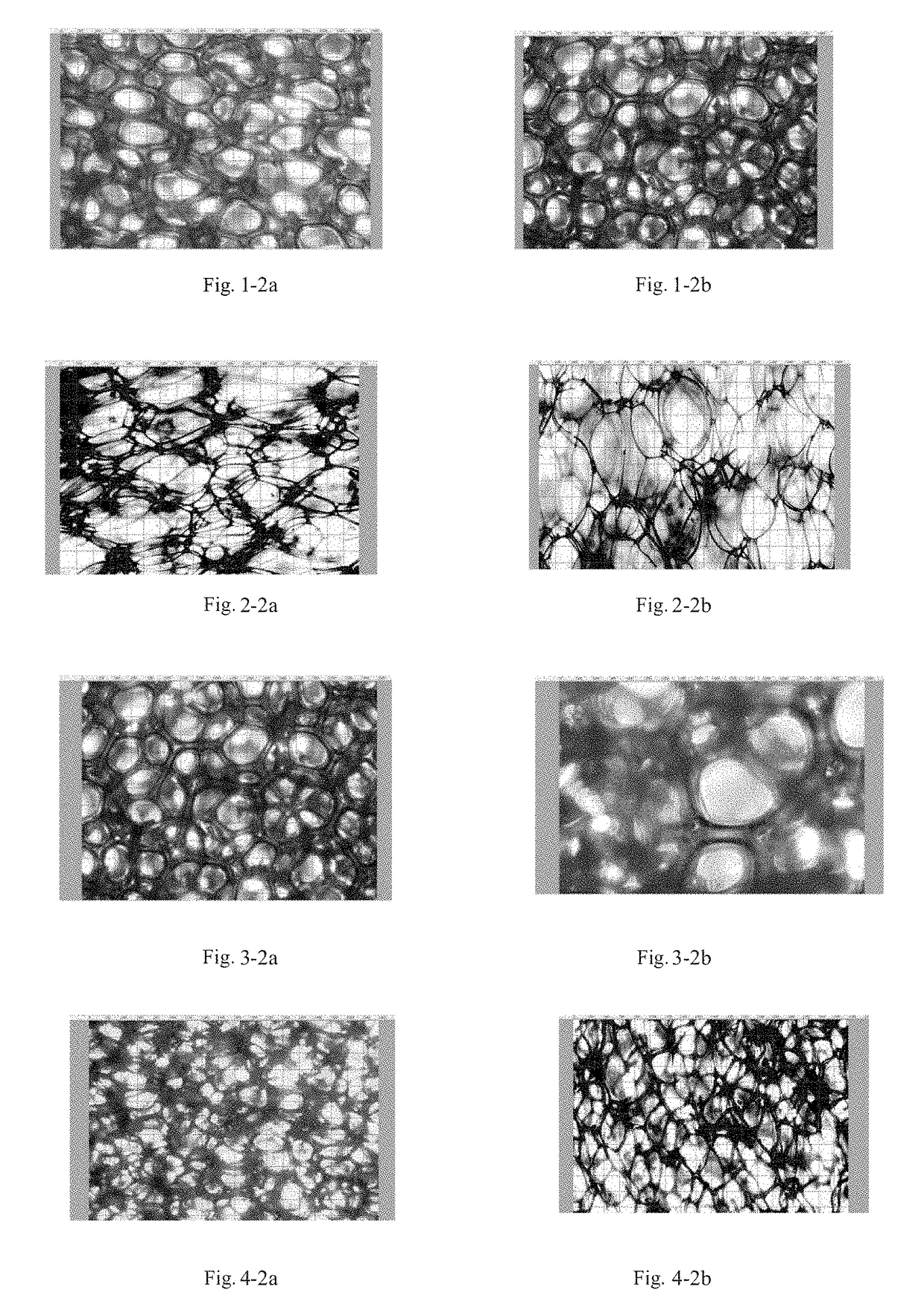Method for continuously preparing solvent-free open-cell and closed-cell polyimide foams
a closed-cell, open-cell technology, applied in the field of polyimide, can solve the problems of two-step method, high preparation cost, limited application, etc., and achieve the effects of reducing environmental contamination, reducing cost, and reducing solvent recovery costs
- Summary
- Abstract
- Description
- Claims
- Application Information
AI Technical Summary
Benefits of technology
Problems solved by technology
Method used
Image
Examples
embodiment 1
[0053
[0054]A method for preparing polyimide foams with aromatic polyester polyol.
[0055]A precursor A-APP
[0056]15,000 grams of Terate type aromatic polyester polyol (APP) produced by Invista company and 1,650 grams of methanol were mixed well. After mixing solution was heated up to 50° C.; 145 grams of Dabco DC-193 and 115 grams of potassium octoate (K-15) were slowly added therein. After 5 minutes, 12500 grams of PMDA were added while stirring. Then the temperature therein was heated up to 140° C. in a heating rate less than 2° C. / min. In the period, the producing process was an exothermic reaction which would increase the temperature of system. The temperature of the system would be kept at 140° C. for one hour until the methanol was completely volatiled. In the process of dissolving, the stirring rate should be maintained at 30 rpm. During cooling, the stirring speed should be adjusted to 10 rpm so that solution had high viscosity and transparency.
[0057]A Precursor B-APP
[0058]1,00...
embodiment 2
[0069
[0070]A method for preparing polyimide foams with ethylene glycol.
[0071]A Precursor A-MEG-BTDA
[0072]15,000 grams of ethylene glycol and 1,650 grams of methanol were mixed well and heated up to 50° C., 145 grams of surfactant Dabco DC-193 and 115 grams of potassium octoate (K-15) were slowly added therein. After 5 minutes, 12,500 grams of 3,3′,4,4′-benzophenonetetracarboxylic dianhydride (BTDA) therein were slowly added while stirring. Then the system was slowly heated up to 145° C. in a heating rate less than 2° C. / min. In this period, the process was an exothermic reaction while would increase the temperature of the system. The system would be kept at 140° C. for one hour until methanol was completely volatiled. In the process of materials dissolving, the solution should be kept at a stirring speed of 30 rpm all the time. During cooling, the stirring speed should be adjusted to 10 rpm so that the solution had a high viscosity and transparency.
[0073]The precursor was named as p...
embodiment 3
[0086
[0087]A method for producing polyimide foams with ethylene glycol and pyromellitic dianhydride.
[0088]A Precursor A-MEG
[0089]15,000 grams of ethylene glycol and 1,650 grams of assisting solvent methanol were mixed well and heated up to 50° C., then 145 grams of surfactant Dabco DC-193 and 115 grams of potassium octoate (K-15) were added therein. While stirring, 17,500 grams of pyromellitic dianhydride (PMDA) were slowly added. During dissolving, the exothermic reaction quickly heated the system up to 165° C. After exothermic reaction finished, the heating rate was kept at no more than 2° C. / min The solution would be kept at 165° C. for one hour until the methanol completely volatized. In the process of materials dissolving, the stirring speed should be kept at 30 rpm. During cooling, the speed should be adjusted to 10 rpm so that the solution had high viscosity and transparency. The precursor was named as precursor A-MEG in order to distinguish it from other precursors produced ...
PUM
| Property | Measurement | Unit |
|---|---|---|
| temperature | aaaaa | aaaaa |
| temperature | aaaaa | aaaaa |
| temperature | aaaaa | aaaaa |
Abstract
Description
Claims
Application Information
 Login to View More
Login to View More - R&D
- Intellectual Property
- Life Sciences
- Materials
- Tech Scout
- Unparalleled Data Quality
- Higher Quality Content
- 60% Fewer Hallucinations
Browse by: Latest US Patents, China's latest patents, Technical Efficacy Thesaurus, Application Domain, Technology Topic, Popular Technical Reports.
© 2025 PatSnap. All rights reserved.Legal|Privacy policy|Modern Slavery Act Transparency Statement|Sitemap|About US| Contact US: help@patsnap.com


